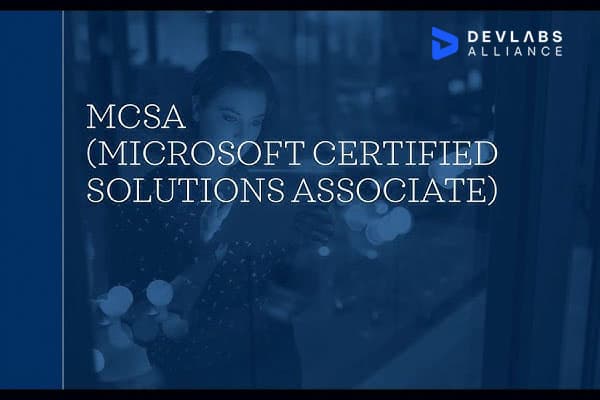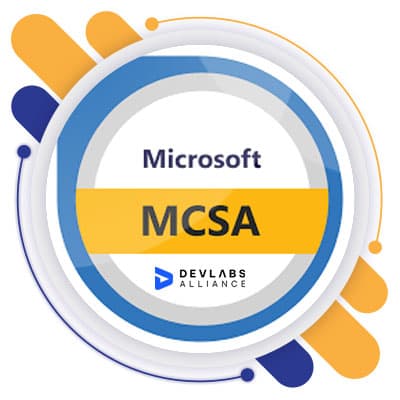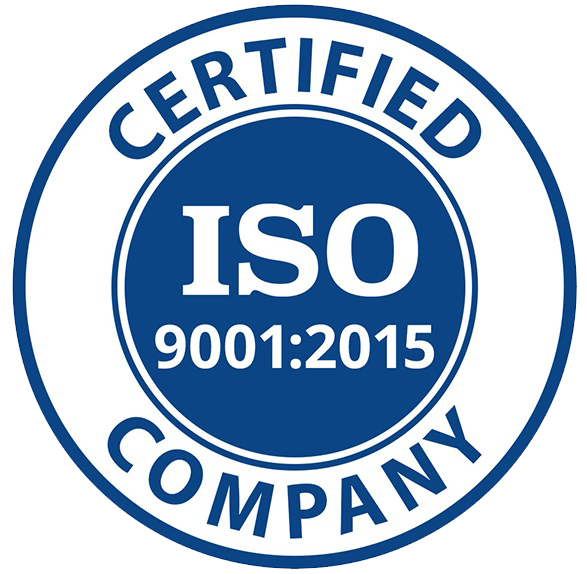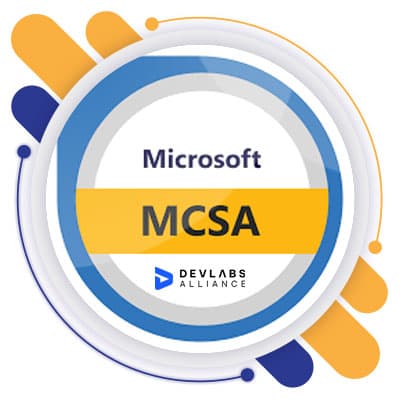
Home / Microsoft / MCSA Certification Training
Microsoft
MCSA Certification Training
MCSA stands for Microsoft Certified Solutions Associate. MCSA Course provides the entry level knowledge of the infrastructure of the Microsoft Windows Server platform and also provides the skills and knowledge required to implement a core Windows Server 2012 infrastructure in an existing enterprise environment.
+24 Hours
Practical Session1000
Students EnrolledAdvanced
Level37
Modules

About MCSA Certification Training
Who Can Take This Course
Suitable For
- System Administrators
- System Engineers
- Network Administrators
- Windows Server Administrators
- Server systems Administrators
- Monitoring Operator Administrators
- One who wants to enhance their skill in Microsoft Server and Virtualization Technology
Total Skills Covered
Deploying and Managing Windows Server 2012
Introduction to Active Directory Domain Services
Managing Active Directory Domain Services Objects
Automation of Active Directory Domain Services Administration
Implementation of IPv4
Implementation of Dynamic Host Configuration Protocol
Implementation of DNS
Implementation of IPv6
Implementation of Local Storage
Implementation of File and Print Services
Implementation of Group Policy
Implementation of Server Virtualization with Hyper-V

Connect With a Course Advisor
By tapping continuing, you agree to ourPrivacy PolicyandTerms & Conditions

DevLabs Edge
Our training programs come with exceptional features that bring out the best in you







MCSA (Microsoft Certified Solutions Associate)
To unlock DevLabs Alliance’s certification, you have to complete and submit the use case assignments provided during the course, and then assignments submitted by you will be evaluated by a team of experts and practitioners. Your result will be shared after assessment and certification will be awarded accordingly.

Sample Certificate
DevLabs Alliance's certified professionals do work for prominent international corporations such as Accenture, Optum, Capgemini, Cognizant, TCS, Wipro, IBM, Sapient, Nucleus, Oracle, Expedia, and more.
To gain access to DevLabs Alliance's courses and their corresponding certifications, you need to adhere to the following steps:
- Successfully complete and submit the practical assignments assigned during the course.
- The DevLabs Alliance team of seasoned experts and practitioners will assess the assignments you submit.
- Your assessment results will be communicated to you, and certification will be granted accordingly.


Flexible Training Plans
Choose your own way to learn
1:1-Classroom
Placement Assistance
Program Cost
Features
Instructor-led Training
Doubt Clearing sessions
Certification Guidance
Flexible Schedule
See More
Live-Classroom
Live – Online Training
Program Cost
Features
Instructor-led Training
Doubt Clearing sessions
Certification Guidance
Flexible Schedule
See More
Live Classroom Batches

No Batch Available
No batches available for this course currently

EMI Options Available
Program Curriculum
Total Chapters 37
1: Deploying and Managing Windows Server 2012
2: Implementation of File and Print Services
3: Implementing Remote Access
4: Implementation Distributed AD DS Deployments
5: Implementation of Failover Clustering with Hyper-V
6: Introduction to Active Directory Domain Services
7: Implementation of Group Policy
8: Installing, Configuring, and Troubleshooting the Network Policy Server Role
9: Implementation of Dynamic Access Control
10: Implementation of Failover Clustering
11: Managing Active Directory Domain Services Objects
12: Maintaining Active Directory Domain Services
13: Configuring Encryption and Advanced Auditing
14: Implementation of AD DS Sites and Replication
15: Implementation of Business Continuity and Disaster Recovery
16: Automation of Active Directory Domain Services Administration
17: Implementation of Local Storage
18: Implementation of a Group Policy Infrastructure
19: Implementation of Update Management
20: Implementation of Active Directory Certificate Services
21: Implementation of IPv4
22: Configuration and Troubleshooting of Domain Name System
23: Deploying and Maintaining Server Images
24: Implementation of Active Directory Rights Management Services
25: Implementation of Dynamic Host Configuration Protocol
26: Implementation of Server Virtualization with Hyper-V
27: Implementation of Network Access Protection
28: Monitoring Windows Server 2012
29: Implementation of Network Load Balancing
30: Implementation of DNS
31: Managing User Desktops with Group Policy
32: Implementation of Advanced Network Services
33: Implementation of IPv6
34: Managing User and Service Accounts
35: Optimization of File Services
36: Implementation of Advanced File Services
37: Implementation of Active Directory Federation Services
Want More Details ?
Sign me up for the DevLabs newsletter
By tapping continuing, you agree to our Privacy Policy and T&C
For Corporates
Take The Right Steps To Success And Growth
- Experiential Learning
- Role Based Learning
- Talent Transformation Path
- Upskilling of Workforce
- Industry practitioners
- Certification

Experiential Learning
We believe in hands-on & real-world Experimental learning rather than just theoretical aspects.
Our Top Faculty
Your success is guaranteed with our experienced faculty


Vignesh
Corporate Trainer SDET
BE MBA


Jatin Bhalla
DevOps Corporate Trainer
MCA


Priyanka Konde
ISTQB Certified Tester
DPCOE, Pune

Corporate Reviews

‘’Data Trainers at DevLabs understood our industry's unique needs and tailored the content accordingly. “
Swati Mair
HRM, Zaggle

‘’Data Science training program provided our team with a good understanding of data analysis and data visualization. “
Roberto Mancebo
Automation Engineer, Applaudo Studios

‘’ Python Trainers at DevLabs ensured that the training was relevant and practical. “
Simarth Kaur
HRM, BroadRidge

‘’ The SDET training program revolutionized our testing approach. We learned about load testing, performance tuning, and test data management. “
Disha Saxena
L & D Manager, Axtria
What Our Students Are Saying
4.8

Fabio Artuso
When you love the process of learning, you can learn anything.. Thank you DevLabs Alliance for introducing me to the DevOps culture. I am sure I gained valuable knowledge and practical experience about some of the most important technologies in the DevOps industry like Jenkins, Docker, Kubernetes, Ansible, Terraform and more.

Hemanth Kumar
I am happy to inform that I completed DevOps curriculum provided by DevOps University and got certified as DevOps Engineer - Professional. I had a great hands-on experience with different DevOps tools like Git, Jenkins, Docker, Kubernetes, Ansible, Terraform and Splunk. It also helped me to get practical knowledge on CICD pipelines.

Jyoti Pawar
I am a Technical Architect, till now I was mainly looking for software solutions only. DevLabs Alliance course helped me to get knowledge of CICD pipelines and its helping me in my career.

Olutayo Samson
It was an awesome experience during all the training sessions at DevOps University. I was introduced to new DevOps tools such as Jenkins, Docker and much more. Though there is a lot to take in, the videos are recorded which allows me to go back and watch them again for clarity. I would recommend this to a friend.

Siddhant Wankhade
As of my experience it is so helpfull to me to work with deployment of my working project,all given hands on and knowledge delivery its too good, in the given session one to one discussion had cleared my doubts. Thanks you for providing in-depth training.
BOOK A DEMO
Witness our excellence
Phone Number*
Sign me up for the DevLabs newsletter
By tapping continuing, you agree to our Privacy Policy and Terms & Conditions
`` We strongly recommend DevLabs for teams that are looking to let their members get the best trainings ``

CTO of Particle
Similar Courses

USA
1603, Capitol Avenue, Suite 413A, 2659, Cheyenne, WY 82001, USA

`Copyright © DevLabs Alliance. All rights Reserved`
|
Refund & Reschedule Policy
Privacy Policy
Terms of Use


